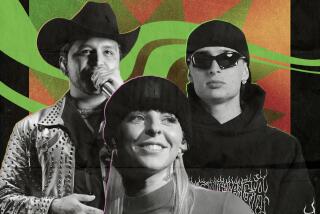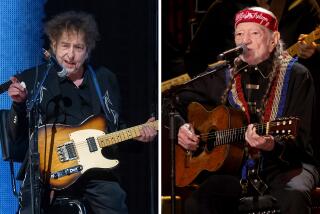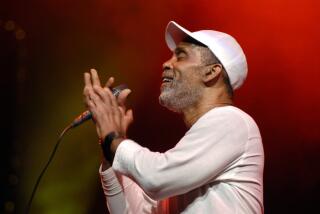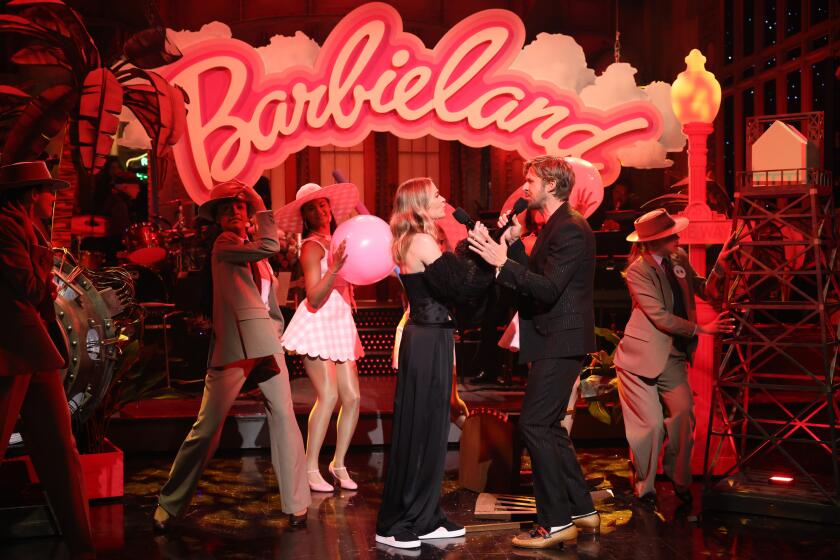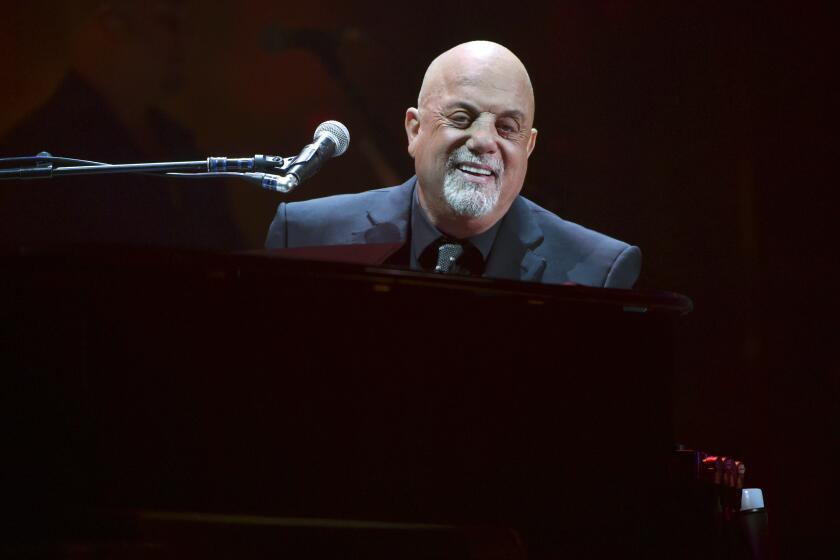Carlos Santana, Las Vegas’ hometown guitar hero
Just for a moment, as Carlos Santana was outlining the philosophy underlying his latest business venture, it started to sound as if he might be branching out into the food service industry.
“What we do is focus on making everything fresh,” the veteran musician and bandleader said. “I remind people: ‘Ooh — don’t bring last night’s leftovers! Make it fresh and new and people will feel it.’”
He’s not launching a new Subway sandwich franchise but a two-year residency at the House of Blues in Las Vegas, where beginning May 2 he’ll be holding court for 80 nights a year with a reimagined show he’s calling “Greatest Hits Live: Santana — Yesterday, Today & Tomorrow.”
The Rock and Roll Hall of Fame guitarist and bandleader had the notion of freshness on his mind during recent swing through Los Angeles, because this new engagement comes on the heels of another residency he wrapped up last year down the Strip at the Joint in the Hard Rock Hotel & Casino.
The House of Blues show promises to be different because its 1,500-person capacity makes it less than half the size of the 4,000-seat Joint. Santana’s also looking for a regular infusion of fresh ingredients in his new enterprise from his vast network of friends and collaborators.
“Tomorrow is the unknown, so how do you rehearse the unknown?” the 64-year-old musician born in Jalisco, Mexico, said while sitting back in a comfortable chair in his hotel room overlooking Beverly Hills, looking sharp in a gold-and-black houndstooth suit and crisp straw fedora (more than likely from his own Santana hat line). “To me, the unknown is inviting African musicians to join us, or Buddy Guy or Derek Trucks or Ben Harper, people from Phish, Warren Haynes — that’s what ‘Tomorrow’ is bringing to the House of Blues.
“I call it a living laboratory,” he said. “We play the beginning [of a set] and we play the end, but in the middle, we’re going to create some experimentation so you can witness a backward flip into the unknown. In other words, there’s no set list in the middle. We will create something so you can just close your eyes and go on a journey with us.”
Santana’s journey has taken him from Mexico to his musical coming-of-age in the Bay Area, where he assembled the group that combined strains of rock, Latin, African and Cuban music into a heady, percolating blend. It fit well with the extended-jam mentality that was emerging from the region with the Grateful Dead and Moby Grape (Santana, in fact, played Woodstock) but actually drew from the long traditions of the native music of other lands.
The global reach of Santana’s music is something he sees fitting perfectly into the entertainment mix in Las Vegas, even though Sin City might seem at odds with the spirituality that’s been a key part of Santana — the man and the band.
“It’s all in perception,” said Santana, who moved to Las Vegas in 2009 and continues to live there with his second wife, Cindy Blackman, the group’s percussionist whom he wed in 2010. “You can be by yourself in a cave in the Himalayas and you can have more distractions than Las Vegas because distraction really comes from your mental obsessions, perceptions, fears, compulsions.
“Las Vegas is just more colors, more textures, more people doing things to entertain you with illusion or whatever their capacity is,” he said. “One of the things I admire most in Las Vegas is the quality of service that people do present. With all respect to New York, I see more people in Las Vegas being present, in the moment, with a genuine smile, saying, ‘Hi, welcome. What would you like to have? It’s my pleasure to serve you.’ And they really mean it. They’re not looking far away wishing they were somewhere else.”
Santana seems to have no burning wish to be anywhere else at this point in his life. After an extensive, and exhaustive, tour last year of more than 100 shows, he’s happy to plant himself in Vegas and prep for his new performance regimen, which calls for blocks of eight shows over various two-week periods.
Staying put will also allow him time to record, and Santana says he’s got three albums in mind to work on between the House of Blues gigs. “I’d like to do two with the band — one just in Spanish for the Latino audience, and one that hopefully will be radio-friendly,” he said. “And I want to do one just for family — with and for the family, with my wife, my son, my two daughters, who are all musicians.”
Collaborating with other artists (outside his family) is nothing new for Santana. His career-reigniting 1999 album, “Supernatural,” which spent 12 weeks as the nation’s bestselling album, featured high-profile guests who included Rob Thomas, Dave Matthews, Lauryn Hill, Mana and Eric Clapton. One artist he’s yet to team up with but would love to do so is L.A.’s new star of the classical-music world, L.A. Philharmonic conductor Gustavo Dudamel.
“There are some things in my heart that he would benefit from, because I know another side [of music] that is good for him,” Santana said with a confident laugh. “I have the firsthand knowledge of utilizing African rhythms with symphonic textures.... I think if we get together he’s going to discover a whole other room in his house that he hasn’t been into.”
For instance?
“Mainly the music of Alice Coltrane,” he said. “I don’t think he’s been exposed to that, and that would really flip his wig…. We get to do something with Herbie [Hancock] and with Wayne [Shorter] at the Hollywood Bowl sometime in August and we’re going to invite him. I’m going to send him some songs we have done before with Plácido Domingo; we also did [George Harrison’s] ‘While My Guitar Gently Weeps’ with a symphony…. I think that would be really beneficial to him — and to both of us, and especially the audience.”
For Santana, delving deeper into the work of artists outside his comfort zone is essential in moving his own music forward. “Music will dare you, it will challenge you in a positive way to upgrade, uplift, transform, illumine, go to your closet and clean it up because a lot of [the old things] won’t fit anymore. That’s the kind of music we want to express: music that lets you let go of baggage and shake off fragments of fear.”
More to Read
The biggest entertainment stories
Get our big stories about Hollywood, film, television, music, arts, culture and more right in your inbox as soon as they publish.
You may occasionally receive promotional content from the Los Angeles Times.
